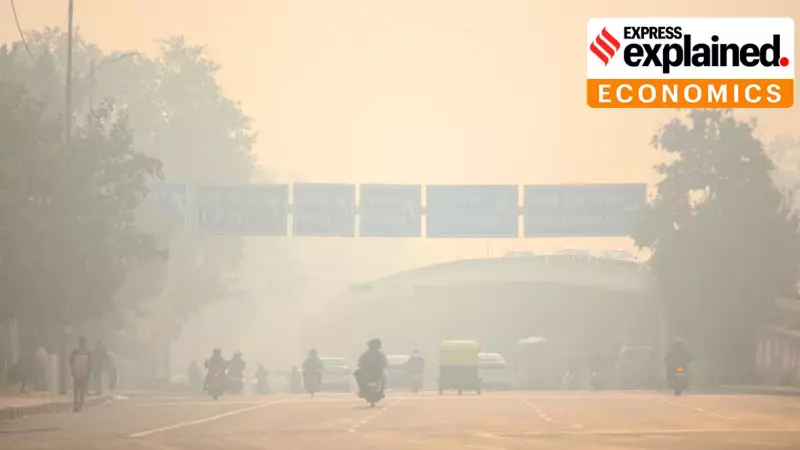
Even as Delhi struggles with hazardous air quality levels, a concerning environmental situation persists in the National Capital Region. At least 16 out of 21 coal-based thermal power units operating within a 300-kilometer radius of the capital continue to function without essential pollution control systems, significantly contributing to the region's pollution burden.
The Missing Pollution Control Technology
All 16 operational units currently lack flue gas desulphurisation (FGD) systems, which are critical for reducing sulphur dioxide (SO₂) emissions. SO₂ represents one of the most harmful pollutants emitted from coal burning at thermal power plants, posing serious threats to human health, environmental stability, and climate patterns. This dangerous compound serves as a major precursor to PM2.5 formation, the fine particulate matter that makes Delhi's air particularly hazardous during winter months.
According to an affidavit submitted by the Commission for Air Quality Management (CAQM) to the National Green Tribunal (NGT), only 13 units out of 35 across 11 thermal power plants within the 300-kilometer radius had installed FGD systems as of April 2025. The remaining units remain at various installation stages, with completion potentially requiring up to 36 additional months.
Operating Plants Without Pollution Controls
An analysis of Central Electricity Authority data from early to mid-November reveals that 16 units across six plants have been operating continuously despite the deteriorating air quality conditions. These include:
- Two units at Panipat Thermal Power Station
- Both units at Yamuna Nagar Thermal Power Station in Haryana
- All three units at Talwandi Sabo plant in Punjab
- All four units each at Guru Hargobind and Ropar Thermal Power Stations in Punjab
- One unit at Harduaganj Thermal Power Station
The operational responsibility for these plants falls to various state power corporations and one private entity. Haryana Power Generation Corporation Limited (HPGCL) operates Panipat and Yamuna Nagar stations, while Punjab State Power Corporation Limited (PSPCL) manages Guru Hargobind and Ropar plants. Uttar Pradesh Rajya Vidyut Utpadan Nigam (UPRVUNL) operates Harduaganj, with Vedanta being the sole private operator at Talwandi Sabo.
Significant Impact on Regional Pollution
A 2024 study conducted by the Centre for Research on Energy and Clean Air (CREA) provides startling context about the scale of this pollution problem. The research indicates that SO₂ emissions from these 11 plants exceed emissions from paddy stubble burning by 16 times. The study further notes that complete FGD installation across this cluster could reduce SO₂ emissions in Delhi-NCR by an impressive 67 percent.
Manojkumar N, author of CREA's report, emphasizes the far-reaching consequences of these emissions. "SO₂ emission from these thermal power plants travels far beyond the plant boundary," he states. "Yet only 14 units within 300 km of Delhi are required to install pollution-control systems, while 21 can operate without them, allowing SO₂ to escape daily. If stubble burning is blamed for polluting Delhi because its smoke crosses state borders, why aren't power plants—whose emissions travel just as far—treated with the same seriousness?"
The collective annual SO₂ emissions from these 11 plants reach approximately 270 kilotonnes, contributing to India's status as the world's largest SO₂ emitter, with the power sector recording 6,807 kilotonnes in 2023 globally.
Repeated Deadline Extensions and Regulatory Gaps
The regulatory timeline reveals a pattern of delayed compliance. The Ministry of Environment, Forest and Climate Change (MoEFCC) initially issued India's first SO₂, NOx, and mercury standards for coal plants in December 2015, providing a two-year deadline for installing SO₂ control systems like FGD technology.
Since most plants missed this original deadline, compliance dates have been repeatedly extended—four times for NCR plants and three times for others. In April 2021, MoEFCC categorized coal plants into three groups based on location, with Category A including plants within 10 km of the National Capital Region or million-plus cities.
However, a September 2022 extension was followed by another revision in July 2025 that introduced further relaxations. The current notification establishes December 2027 as the deadline for Category A plants and December 2028 for Category B plants where applicable. Most significantly, Category C plants receive complete exemption from FGD installation requirements provided their chimney heights meet specified limits.
This exemption affects seven out of the 11 plants near Delhi, accounting for 21 units, with most lacking FGD technology. Only L&T's Rajpura plant has installed FGD on both units, while Harduaganj has implemented the technology in just one of its four units.
Manojkumar criticizes this distance-based classification as "an arbitrary framework" that enables Category C units to avoid timely pollution controls despite their substantial contributions to regional haze and health risks. "SO₂ and other emissions don't respect administrative boundaries. They can travel hundreds of kilometres, far beyond the 10-km radius used by regulators," he notes.
When queried about their non-compliance, both Vedanta and PSPCL cited the Category C exemption criteria as justification for not installing FGD systems in their respective plants.





